Weather in China ☀️ The Complete Guide
The Weather in China 🌤 What’s The Truth
Summarising the weather in China within a few hundred words is near enough impossible given the sheer size of China!
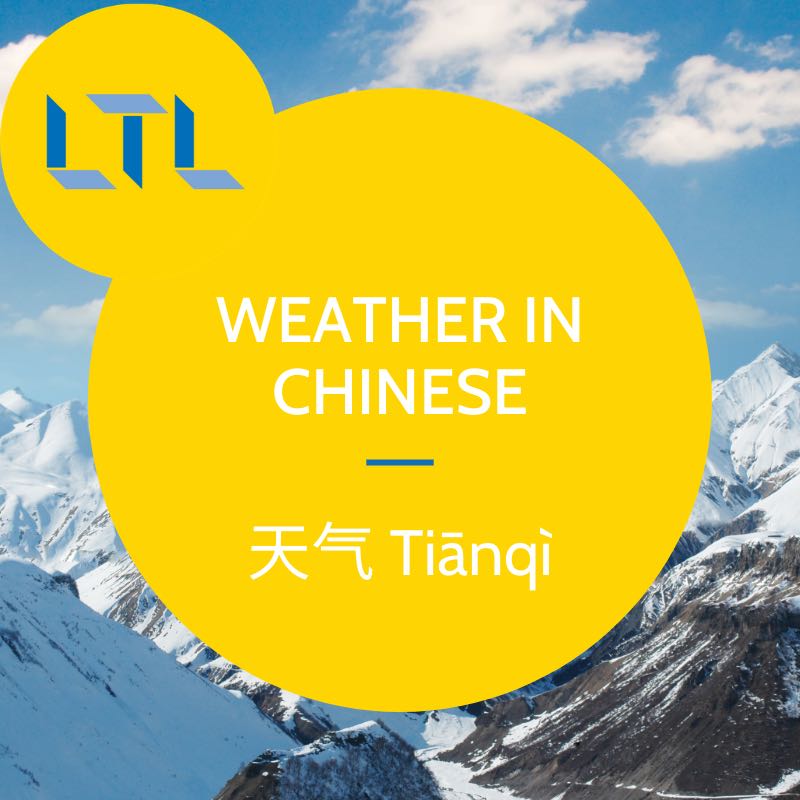
So, heads up, this is going to be a long one, but probably the most in-depth post about the weather in China you’ll find!
We’ll start by breaking the year down into the 12 months, and after this we’ll break China down by region.
We’ll finish off with some fun facts about the weather in China.
TIP – Weather in Chinese is 天气 Tiānqì
Ready, set… let’s SNOW (yea, it was intentional)
Weather in China || January
Weather in China || February
Weather in China || March
Weather in China || April
Weather in China || May
Weather in China || June
Weather in China || July
Weather in China || August
Weather in China || September
Weather in China || October
Weather in China || November
Weather in China || December
Weather in China || City-by-City
Weather in China || Things You Should Know
Weather in China || Key Vocab
Now it goes without saying that because China is SO BIG, the weather will vary hugely dependant on your region, we’ll try and cover them as best we can!
Weather in China in January
Most parts of China will be cold in January, if you head north-east to Harbin (in Heilongjiang province), cold is an understatement.
It’s absolutely baltic, do NOT pack lightly!
Unless you are heading to the beachy south (think Beihai!), expect to pack a jacket and be prepared for some cool/cold weather.
The cold in the north of China is dry, compared to say the cold in Moscow which is generally wet and snowy.
Central China has to deal with more of a damp cold, probably worse day to day than the north.
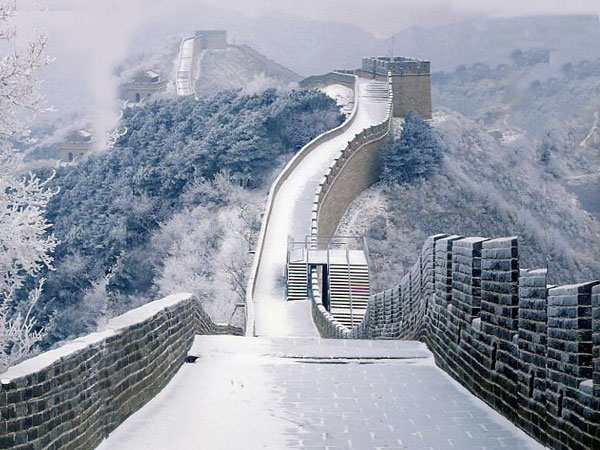
It’s worth noting that in the north the heating is cranked up by the government in January ONLY IN THE NORTH… if you are based in the south, despite the warmer temperatures, you will find it actually will be colder inside.
Going further and further south, it begins to get more comfortable.
Here are some averages for popular cities:
- Beijing (north): Average in the day is 35 F / 1 C. Average number of rainy days is 2.
- Shanghai (central): Average in the day is 46 F / 8 C. Average number of rainy days is 11.
- Guangzhou (further south): Average in the day is 65 F / 18 C. Average number of rainy days is 8.
- Guilin (south): Average in the day is 53 F / 12 C. Average number of rainy days is 3.
January Travel Tips for China
TIP 1 – During some years January plays host to Chinese New Year. AVOID IT!
Chinese New Year is one of the biggest human migrations in the whole world.
You do not want to be mixing with a set of rushing Chinese, and you’ll also pay more money for the pleasure as demand is obviously so high.
TIP 2 – The further north you go, the colder it will get, and trust us when we say the north is COLD! The 3 provinces of Liaoning, Jilin and Heilongjiang are freezing during January, pack thermals, thick gloves, scarves, hats etc. You do not f*ck with Chinese winters!
TIP 3 – If you do decide to brave China in January, you may well be rewarded, as this is far from peak season, places will be much less crowded than other seasons EXCEPT Harbin (due to it’s famous Ice festival).

Weather in China in February
February is still cold, perhaps not quite hitting the heights of January, but still, if you are around the north, be prepared and be ready.
The weather in China in February does change drastically again, depending on your region with the north remaining cold and the south starting to (already) warm up for some scorching summers.
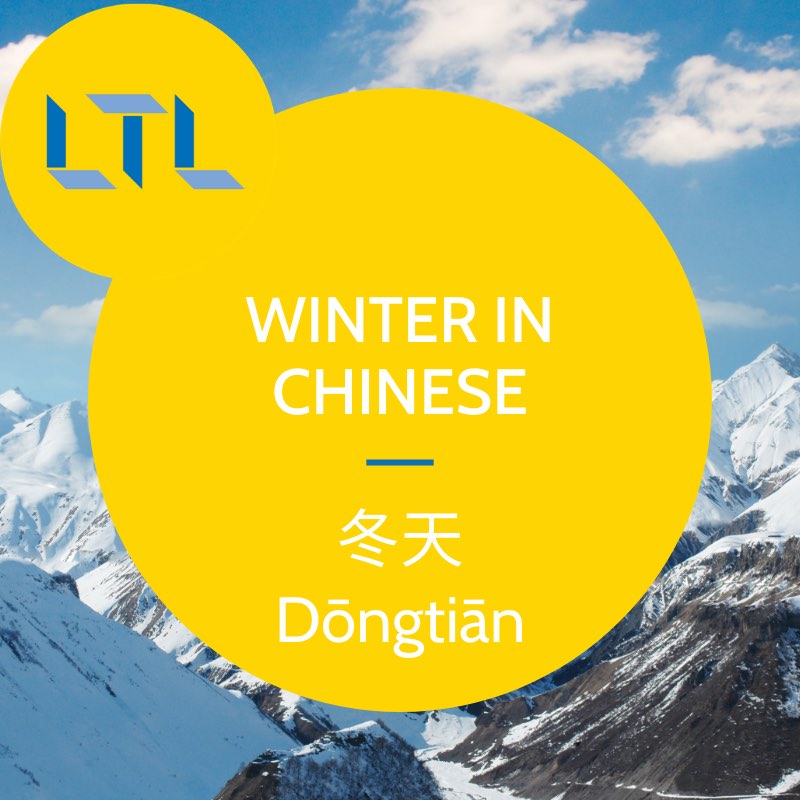
You’ll see below the temperatures are pretty even compared with January, but the key point to take is the city of Guilin, based in the south, now starts to endure much more rainfall and this is the theme across the south of China.
Guangzhou likewise receives much more rain.
- Beijing (north): Average in the day is 36 F / 2 C. Average number of rainy days is 2.
- Shanghai (central): Average in the day is 46 F / 8 C. Average number of rainy days is 7.
- Guangzhou (further south): Average in the day is 65 F / 18 C. Average number of rainy days is 11.
- Guilin (south): Average in the day is 53 F / 12 C. Average number of rainy days is 16.
So in summary:
- North – Cold
- Central – Warmer but can be cooler
- South – Cooler but rainy
February Travel Tips for China
TIP 1 – Be prepared for plenty of local events during February. Chinese New Year commonly falls here, as does Valentines Day (they have 6, so by law of averages…) and Lantern Festival.
Prepare around these dates because prices for tickets and hotels will vary sharply if you pick the wrong days.
TIP 2 – The north of China sees next to no rain during this time of year. If you want an escape from the rain, and don’t mind a bit of cold, head to the north such as Beijing and Tianjin.
TIP 3 – If snow is your thing, February is one of the months where you have a shot of seeing China under the white stuff.
Although it’s far from widespread, when it happens, it happens hard.

Weather in China in March
March would probably rank as one of the better months to visit China given the fact the winter chill, even in the very north, starts to calm down.
There are also no public holidays in China which makes it a time where locals do not travel and are back to the grind after Chinese New Year… thus opening a nice little window for us to travel with even cheaper prices, and with no searing Summer heat!
Win, win then!
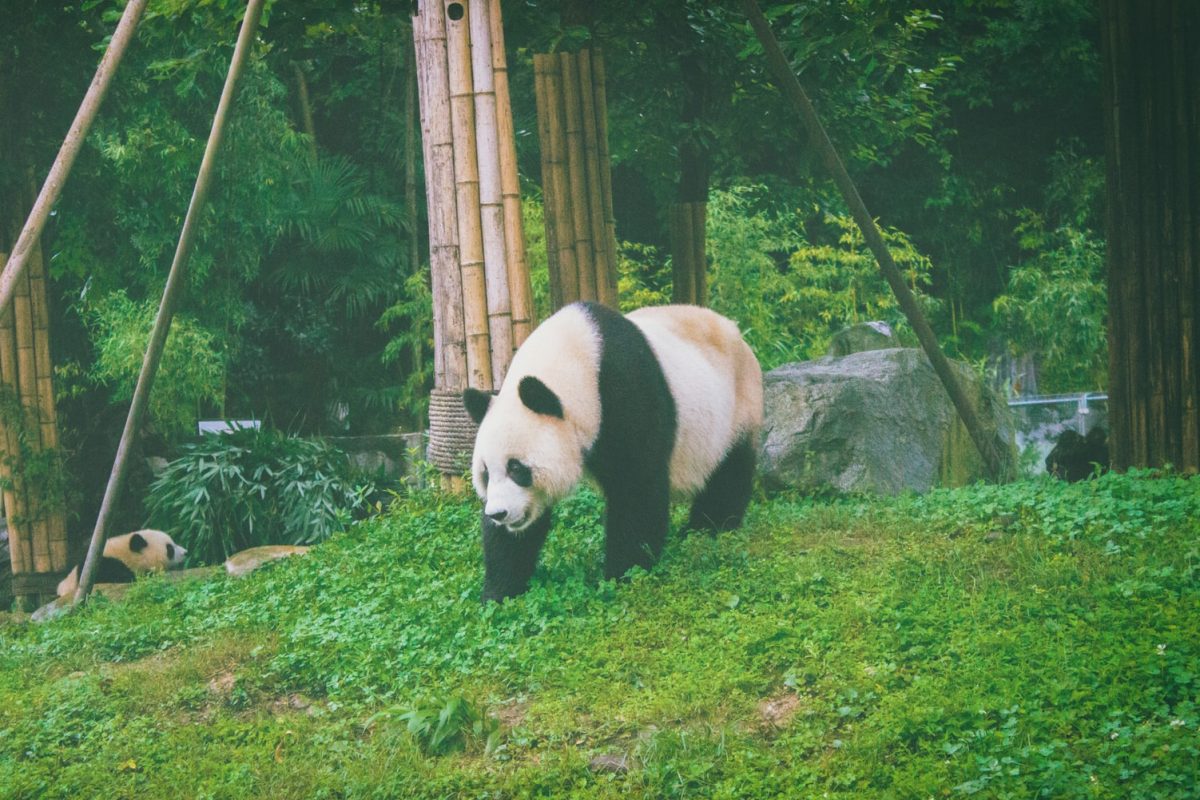
Be cautious though, from the central parts of China, down, the rain is in full swing.
Again, to avoid this, the north is the place to be.
Also remember that the north is still cold!
- Beijing (north): Average in the day is 51 F / 11 C. Average number of rainy days is 4.
- Shanghai (central): Average in the day is 55 F / 13 C. Average number of rainy days is 13.
- Guangzhou (further south): Average in the day is 71 F / 21 C. Average number of rainy days is 14.
- Guilin (south): Average in the day is 62 F / 17 C. Average number of rainy days is 19.
NOTE – Guilin, Guangzhou and Shanghai here. Roughly half to 2/3 of the month endure rainy days.
Be careful to not be TOO complacent.
Sure it’s warmer than January but the temperatures still drop low at night in many areas, pack with caution and be prepared.
It ain’t Summer yet!
March Travel Tips for China
TIP 1 – March (particularly towards the end of the month) is one of the best times for hiking on the Great Wall.
Why? Because temperatures during the day are comfortable, dry, and the crowds are much less than other parts of the year
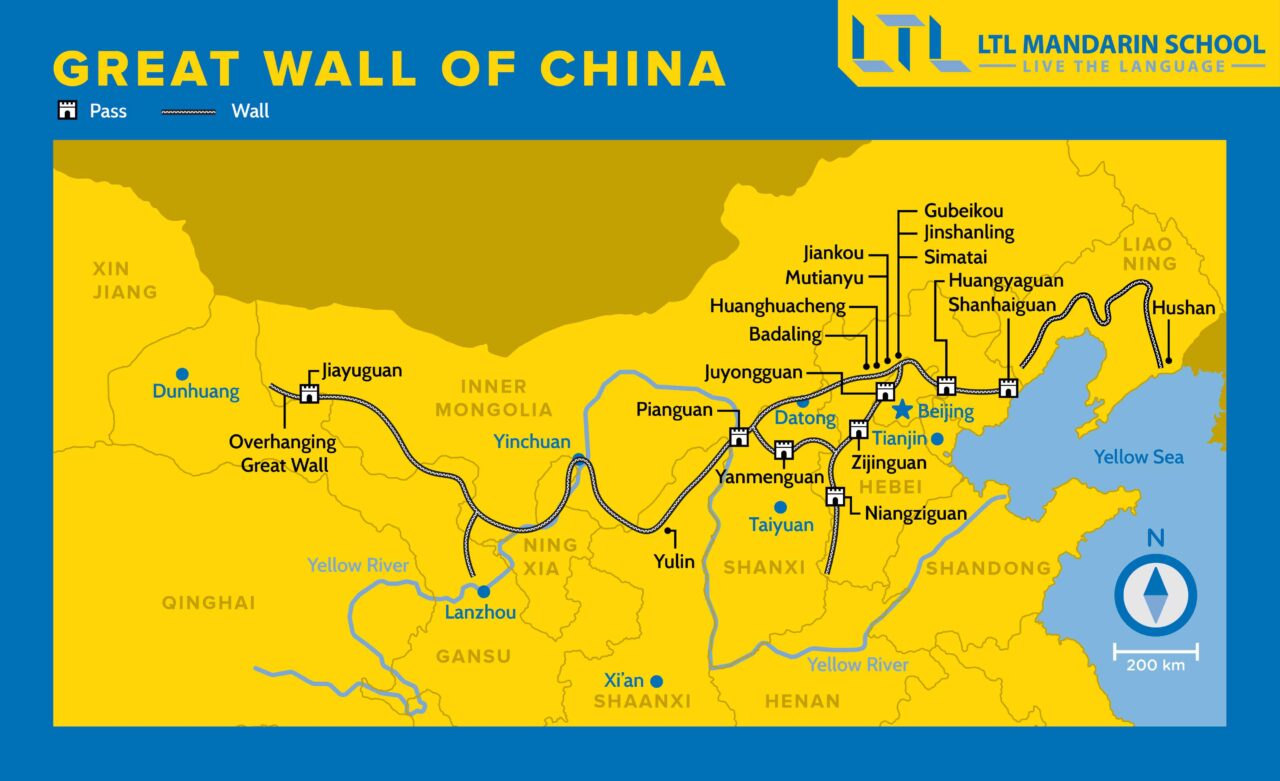
TIP 2 – It’s also a great time for you to see the famous giant pandas in Chengdu.
The same rule applies… fewer tourist groups around means you can enjoy a quieter time with the giant pandas.
TIP 3 – Be flexible with your travel plans. Rain can put paid to a number of travel plans, set yourselves indoor contingency plans if possible.

Weather in China in April
Ah April, Spring has sprung (although get this, in April 2019 in Beijing we had snow)!
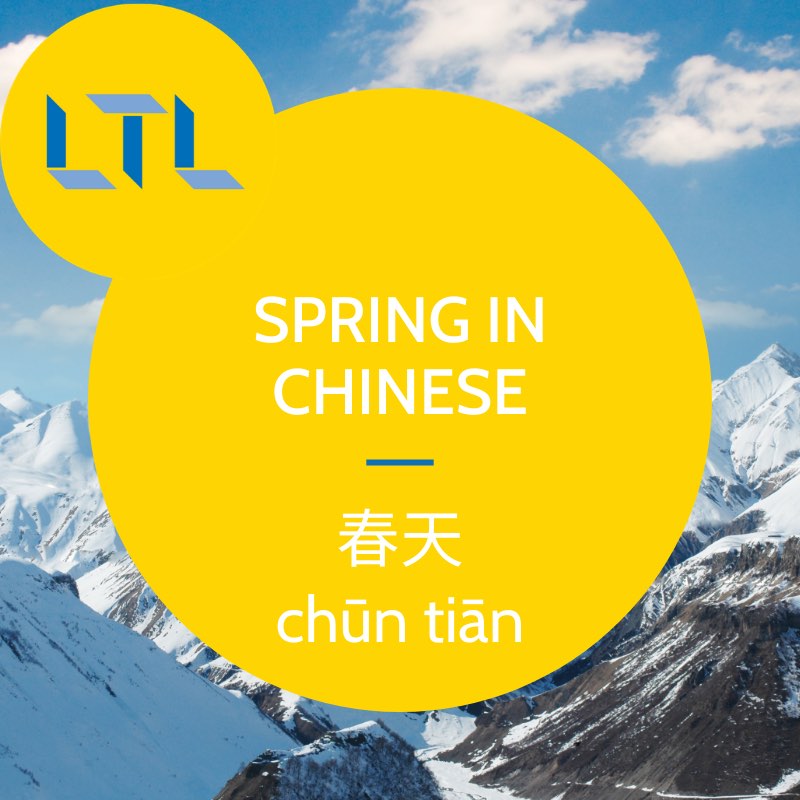
Nature lovers particularly enjoy these months and if you are based in the north you can expect settled and very comfortable temperatures at this time of year.
The south will continue to see plenty of rain but temperatures now start to soar upwards likewise.
Shanghai for example, can see a wide mixture of cool and damp weather but also warm and sunny days likewise…
So be prepared for a bit of everything if you are heading to that part of China.
The south, including Guilin and Guangzhou will actually start to get pretty hot towards the end of the month.
- Beijing (north): Average in the day is 68 F / 20 C. Average number of rainy days is 5.
- Shanghai (central): Average in the day is 64 F / 18 C. Average number of rainy days is 13.
- Guangzhou (further south): Average in the day is 79 F / 26 C. Average number of rainy days is 15.
- Guilin (south): Average in the day is 72 F / 22 C. Average number of rainy days is 20.
April Travel Tips for China
TIP 1 – Zhangjiajie 张家界 is one of China’s most famous and in demand spots for its sheer beauty.
The movie AVATAR is based around the incredible scenery. April is a brilliant time to tick this one off your bucket list.
TIP 2 – Temperatures in Xi’an are wonderfully comfortable at this time of year. If Zhangjiajie doesn’t float your boat, then a trip to one of China’s most historical and underrated cities could well be on the cards.
PS – we even have a school there, drop in and say hi!
TIP 3 – We’ve not given much mention to Xinjiang province yet (China’s giant province based in the west).
What we will say about April is to AVOID Xinjiang!
The weather is dry, cloudy, and pretty cold. Couple that with dust storms that occur quite often, and this is not the time to head to the west of China.

Weather in China in May
Starting to get into hot territory now in various parts of the country. Even Harbin is moving into the heady 20’s degrees kind of region!
Whereas the central and southern regions are likely to greet you with warm, but damp weather, the north remains typically dry.
May is, alongside April, a pretty sound month to visit China given the fact the month benefits from calm temperatures and a modest amount of rainfall.
The scenery around is also green and lush so it could rank as one of the better times of the year to see China’s beauty in all it’s glory.
- Beijing (north): Average in the day is 68 F / 20 C. Average number of rainy days is 4.
- Shanghai (central): Average in the day is 70 F / 21 C. Average number of rainy days is 14.
- Guangzhou (further south): Average in the day is 77 F / 25 C. Average number of rainy days is 17.
- Guilin (south): Average in the day is 77 F / 25 C. Average number of rainy days is 23.
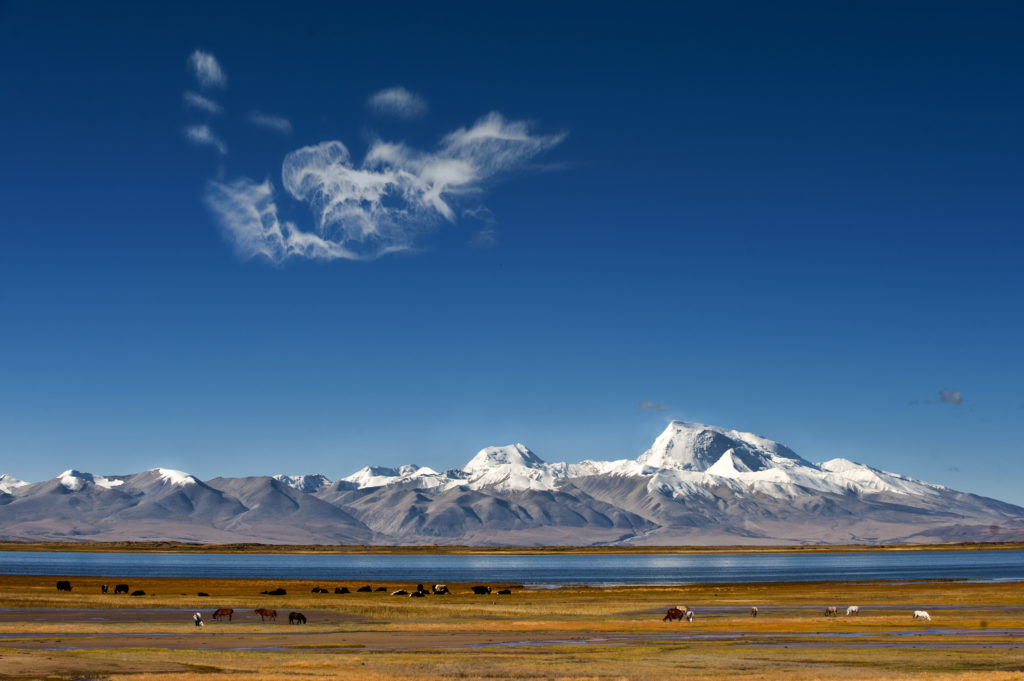
FANCY A HIKE/ADVENTURE? – Tibet and Northern Gansu generally see an influx of tourists in May. Why?
Because these areas are warming up enough to make the trekking conditions at altitude comfortable.
May Travel Tips for China
TIP 1 – Guilin is a popular hotspot for tourists and China and with good reason.
The Longji Rice Terraces are a great place to visit in May. The terraced fields are irrigated but not yet obscured by growing rice. There may well be rain, but the scenery and setting is quite something to behold.
TIP 2 – BRING YOUR UMBRELLA if you are heading to the central/southern regions of China. You will be incredibly lucky to avoid rain in these parts.
TIP 3 – If you are planning to travel to China at the start of May be aware there is a public holiday here (Labor Day).
Labor Day/May Day is a three-day weekend for locals and therefore many like to travel and visit popular tourist destinations.

Weather in China in June

Is it me or is it hot in here…
June welcomes the Summer heat, pretty much all locations will start to see hot weather as Summer well and truly gears up.
Choose your Chinese city wisely if you are planning to visit China in June because the conditions can change massively dependant on where you go.
June also heralds the start of “rainy season”. This can range from heavy rain, thunderstorms, and even flooding in the central and southern regions of China.
DID YOU KNOW – there’s another Chinese festival that takes place during June.
That festival is called the Dragon Boat Festival. There will be dragon boat racing and special rice dumplings during this festival.

The Ultimate Guide 🏖 8 (Great) Things To Do In Beihai
What are the best things to do in Beihai? We have prepared a definitive list of 8 places to see, food to eat, and how to get to them.
- Beijing (north): Average in the day is 77 F / 25 C. Average number of rainy days is 10.
- Shanghai (central): Average in the day is 77 F / 25 C. Average number of rainy days is 13.
- Guangzhou (further south): Average in the day is 81 F / 27 C. Average number of rainy days is 18.
- Guilin (south): Average in the day is 81 F / 27 C. Average number of rainy days is 18.
Lots of rainy days isn’t there!
In the north the rain is much more sporadic though, it should not affect your daily activities even if you are exposed to the elements like being on the Great Wall for example.
In the south the rain will be much more persistent and relentless.
June Travel Tips for China
TIP 1 – EXPECT RAIN. It could come at any time, from nowhere, and last as long as a piece of string. Difficult to plan for, but plan you should.
This applies more-so for central and southern regions, but that doesn’t exempt the north from the rain either, just less so.
TIP 2 – If you don’t want to be surrounded by tourist groups, get to China now before July, or you will be waiting until after October! The busy Chinese tour group season is from July to October.
Expect to pay higher prices for tickets and transport, and endure much bigger crowds.
TIP 3 – For nature lovers June is a smart time to head to any of the following:
- Hangzhou
- Yunnan Province
- Yellow Mountains
Hangzhou is a gorgeous city not too far from Shanghai, Yunnan is widely regarded as the most beautiful province in China and the Yellow mountains are one of China’s “sacred 5”.
All are well worth a visit and June is a smart time to head to them.

Weather in China in July
Summer holiday is here as China’s schools and universities enjoy a couple of months off… you know what that means.
It’s peak season time!
The weather becomes humid and the rain continues to fall in many regions of China.
On the plus side, your luggage to China needn’t be large, for you won’t need to wear much day to day!
BE CAREFUL THOUGH – July is the wettest month of the year in China. Pack wisely. Lightweight jackets will be your friend here. Something easy to handle, but cover you from the inevitable showers you encounter.
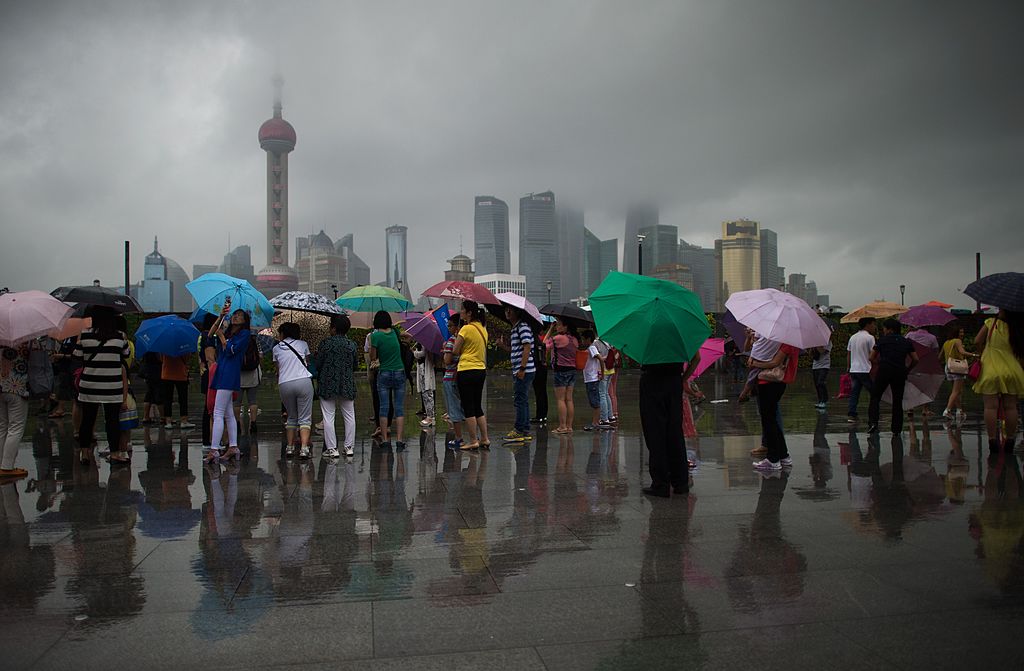
Temperatures rarely, if ever, drop below 20 degrees celsius in pretty much all areas of the country.
In fact, generally they will be lodged in the early 30’s.
- Beijing (north): Average in the day is 81 F / 27 C. Average number of rainy days is 14.
- Shanghai (central): Average in the day is 82 F / 28 C. Average number of rainy days is 13.
- Guangzhou (further south): Average in the day is 86 F / 30 C. Average number of rainy days is 17.
- Guilin (south): Average in the day is 84 F / 29 C. Average number of rainy days is 16.

Complete Shopping Guide to Buying Deodorant in China
Avoid the Smellpocalypse: Buying Deodorant in China Deodorant in China – Learn it, it’s very useful! Anyone considering going to China has probably done some research on the food, language, and culture of China. But have you done your research…
July Travel Tips for China
TIP 1 – AVOID the Great Wall. The weather now is starting to get uncomfortably hot in Beijing and with the crowds, there are far better times to visit one of the world’s most iconic spots.
TIP 2 – Pack for the rain.
You won’t need much in terms of day to day clothing but be sure to remember that lightweight coat for the rain.
TIP 3 – The karst caves (in Guilin) have cooler temperatures inside. These are beautiful beyond words and a place you must visit.
BONUS – Take it from us, if heat and humidity is something you struggle with, look at other dates in the year.
It’s not worth being uncomfortable, and will take the enjoyment away from your experience in China.

Weather in China in August
The peak of Summer and also tourist season, welcome to August in China.
The humidity is still high across the country except for the regions in the North West.
August, like July, is wet, so expect hot and rainy weather combined especially from central areas down.
Hong Kong and Guangdong province (bordering Hong Kong) are prone to rather large storms.
Tibet and the Northwest are exceptions to the Summer rule in China. You’ll experience hot days, but much cooler nights and little rain.
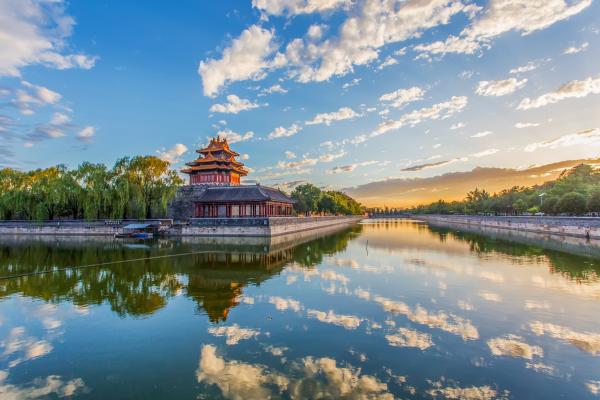
- Beijing (north): Average in the day is 78 F / 26 C. Average number of rainy days is 12.
- Shanghai (central): Average in the day is 84 F / 29 C. Average number of rainy days is 12.
- Guangzhou (further south): Average in the day is 86 F / 30 C. Average number of rainy days is 17.
- Guilin (south): Average in the day is 86 F / 30 C. Average number of rainy days is 15.
PRICES – August is the month where you’ll see people travel the most. Bare this in mind if booking to come to China in August.
August Travel Tips for China
TIP 1 – Head to the Qingdao Beer Festival. Asia’s Oktoberfest in a nutshell!
Qingdao is nicely located in the northern part of China so the temperature should be perfect to knock back a few beers without being too uncomfortable.
Qingdao also boasts a coastline so you can even have a dip in the sea!
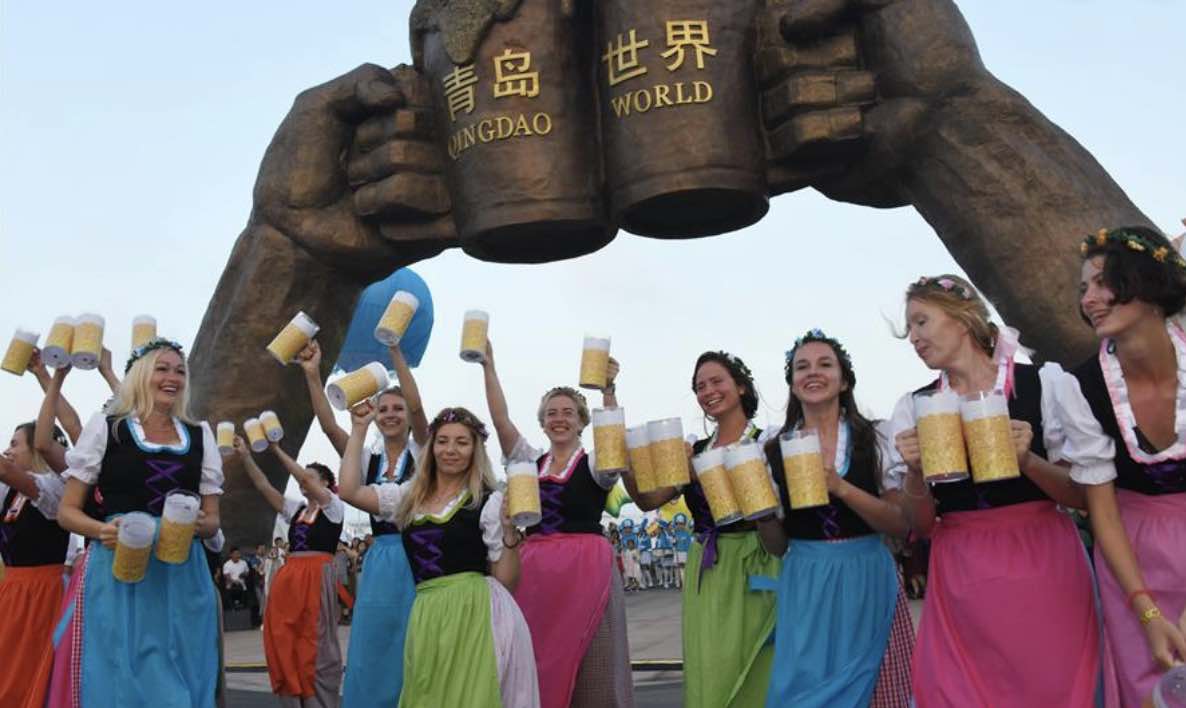
TIP 2 – August is HOT, and China is BIG… do you want to be walking around exploring the country of 30 degree + heat?
If the answer to this is no, choose another time of the year, or choose your location wisely (i.e. maybe not somewhere where hiking is a key part of the location).
TIP 3 – Mountainous areas are great places to avoid the summer heat in China. There are 5 sacred mountains you can choose from, tick off one in August.

Weather in China in September
You made it through the Summer in China, good work. Now things start to cool down, ever so slightly!
The above statement might depend on where you are. In the south of China, the hot and humid weather will continue, but in the north, things start to crisp up.
It’s worth noting this – September and October are considered the back-end season for tourism in China. You can widely expect to find some really nice deals on plane tickets and accommodation. Keep an eye out.
There will still be plenty of rain around towards the southern parts of China but the north will prove to be much drier at this time of year.
It must be said that the pleasant, early autumn weather is just perfect for touring around the country.
This certainly ranks as one of the best times to visit China in our book.
- Beijing (north): Average in the day is 70 F / 21 C. Average number of rainy days is 5.
- Shanghai (central): Average in the day is 75 F / 24 C. Average number of rainy days is 13.
- Guangzhou (further south): Average in the day is 82 F / 28 C. Average number of rainy days is 14.
- Guilin (south): Average in the day is 80 F / 27 C. Average number of rainy days is 13.
September Travel Tips for China
TIP 1 – Don’t be fooled into thinking summer is over just yet. It isn’t!
China is still very warm in September especially earlier in the month. Be prepared for that.
TIP 2 – Mid-Autumn Festival takes place on month 8 and day 15 of the Chinese lunar calendar, usually mid/late September.
Bare this in mind when booking tickets for tourist attractions, planes or trains.
TIP 3 – September is a month to be spent outdoors so take a visit to the picturesque cities of Hangzhou and Suzhou which are very close to Shanghai via the bullet train.
Xinjiang is also a great place to visit during September with more comfortable temperatures than other parts of the year.

Weather in China in October
Alongside March, October ranks amongst one of the best times to come and visit China.
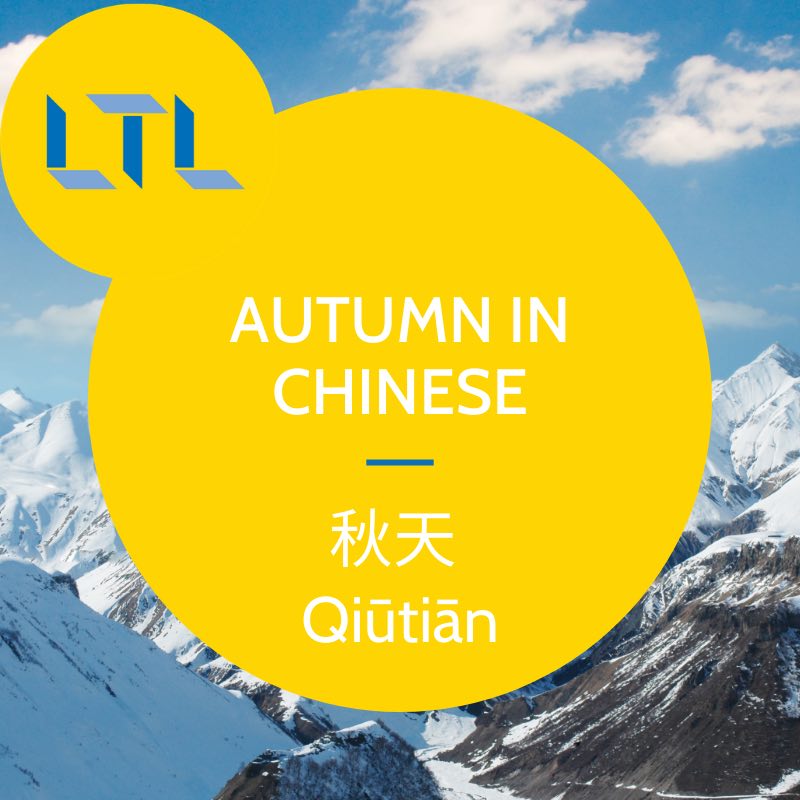
The summer heat has well and truly passed, crowds are minimal, yet the sun remains out for you to bask in and enjoy.
October brings cooler and milder temperatures and with plenty of sunny days, you can enjoy the autumnal foliage whilst relaxing in tidy temperatures.
It is worth noting that there will still be fair rain levels in the south of China and the east also, however, this starts to drop as autumn passes.
IMPORTANT – Although October ranks as a great time to visit China, October 1st-7th is Golden Week in China. But what does that mean?
This is one of the biggest human migrations in the world, in which Chinese tend to spend their 7 days of freedom travelling. If you can, avoid the first week and come along just after, when tourist spots should be at their quietest.
- Beijing (north): Average in the day is 70 F / 21 C. Average number of rainy days is 5.
- Shanghai (central): Average in the day is 75 F / 24 C. Average number of rainy days is 8.
- Guangzhou (further south): Average in the day is 82 F / 28 C. Average number of rainy days is 7.
- Guilin (south): Average in the day is 80 F / 27 C. Average number of rainy days is 10.
NOTE – the number of rainy days significantly drops in October, making it a much more desirable month to visit China.

The Complete Guide to All the Directions in Chinese 🚀
About to go to China? Learning directions in Chinese should be on your priority list. Directions in Chinese will absolutely help you every day in China.
October Travel Tips for China
TIP 1 – This is a great month to visit the Great Wall of China. Less crowded, cooler weather and (hopefully) some beautiful, blue and picturesque skies
TIP 2 – Avoid the first week of October as mentioned above. Golden Week is hectic at the best of times. From October 15th onwards is perfectly timed.
TIP 3 – If you decide to head to the west of China, research the forecast beforehand. Temperatures generally drop fast throughout October

Weather in China in November
Winter starts to set in during November as northern China begins to see some pretty cold temperatures, especially during late November, and the more north you travel.
You’ll see below the temperatures drop quite sharply in some locations, as does the number of rainy days.
That said the beginning of November can still be warm enough for outdoor activities such as a visit to the Great Wall (should be nice and quiet at this time of year).
Central and South China on the contrary have relatively comfortable temperatures in November. November actually is a good time to see autumn foliage in China.
Why?
The leaves change colour after the first frosts of the winter months.
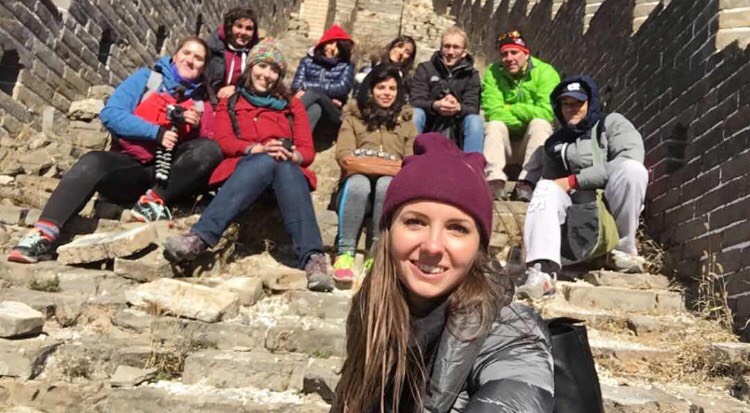
The rain also starts to calm down. Guilin for example, normally pretty wet, has an average of 10 rainy days in November, still a fair portion of the month, but less than other parts of the year.
- Beijing (north): Average in the day is 41 F / 5 C. Average number of rainy days is 1.
- Shanghai (central): Average in the day is 55 F / 13 C. Average number of rainy days is 5.
- Guangzhou (further south): Average in the day is 68 F / 20 C. Average number of rainy days is 11.
- Guilin (south): Average in the day is 61 F / 16 C. Average number of rainy days is 10.
November Travel Tips for China
TIP 1 – If you want to get yourself to the Great Wall, the start of the month would be the best time to visit, before it gets a bit (actually a lot) colder.
TIP 2 – If you want to soak up Chinese culture, but feel Beijing is a bit cold for you, head to Xi’an. We see Xi’an as a mini-Beijing almost. There is steeps of history there, insanely good cuisine, and the temperatures are a little warmer.
TIP 3 – If you fancy something really outside the box November might just be a great time to head to Tibet.
Tourism drops from October in Tibet and you will get a more authentic experience of the place.
The people you do stumble across will mainly be local Tibetans. Due to this tickets and accommodation are priced much lower and the crowds are far more sparse, win-win!

Weather in China in December
Christmas time in China! December is the month you well and truly feel the winter pinch.

The map below clearly shows the divide from north/central/south of China.
From Beijing, upwards it’s getting pretty baltic, from Shanghai, down, it’s absolutely fine, albeit still cold.
How brave are you feeling!?
December is very much low season for not just international, but local tourists also.
Christmas is not a holiday in China so very few people venture out and about in December, opening the door for you to enjoy cheaper prices and much smaller queues in normally very busy destinations.
Although snow is quite rare at this time of year (more chance in January or February), there is potential you could enjoy some of the white stuff if based north or north/east.
Cross those fingers for a white Christmas, although in truth, the chances are slim.
- Beijing (north): Average in the day is 32 F / 0 C. Average number of rainy days is 1.
- Shanghai (central): Average in the day is 46 F / 8 C. Average number of rainy days is 4.
- Guangzhou (further south): Average in the day is 63 F / 17 C. Average number of rainy days is 5.
- Guilin (south): Average in the day is 54 F / 12 C. Average number of rainy days is 4.
December Travel Tips for China
TIP 1 – If you like to Ski, December is the month it all kicks off in China.
With the 2022 Winter Olympics coming to Beijing the new Zhangjiakou resort is up and running and well worth a visit.
TIP 2 – Christmas in China is not a thing, although you will some decorations, it’s not a place to be if you love Christmas.
Hong Kong on the contrary gets well into the spirit. There are plenty of Christmas Day sales and a big festive feel to the place.
TIP 3 – Avoid the west of China (Xinjiang) during the colder months. It can be quite uncomfortable and with heavy snowfall also likely, your travels could well become hampered.

Weather in China || City-by-City
So that’s the weather in China broken down by month… by now you’ve probably discovered the enormity of this incredibly country.
The weather really does depend hugely on the region you visit.
So given that, we thought it’d be handy to break the guide down not just into months, but also by region too!
Ready…?
Weather in Beijing
Beijing, the capital city of China, is based in the north of China meaning rain is rare and the seasons are extreme.
In fact, Spring and Autumn are very short in Beijing but without doubt the most comfortable.
Summer is long and hot, Winter is long and cold.
Spring and Autumn come and go very quickly with a quick transition but these would rank the best times to come to Beijing if weather is a key factor for your visit.

As you’ll see above, temperatures barely get above freezing in the winter months from December – February, and in the Summer, you’ll regularly be welcomed with 30+ degree temperatures.
With July being the wettest month of the year, Beijing endures around 14 days of rain during this month but otherwise, rain is fairly uncommon and actually quite sporadic.
You don’t get drizzly, long-lasting showers in Beijing, but quick powerful thunderstorms, and then normality is resumed!
BEST MONTHS TO VISIT BEIJING – April/October
Weather in Shanghai
Shanghai is much further south compared with Beijing.
Based on the east coast, Shanghai sees much more rainfall than Beijing but it isn’t nearly half as cold.
Shanghai actually enjoys a subtropical monsoon climate meaning the weather in Shanghai is generally mild and rainy.
Unlike Beijing, the four seasons of Shanghai are clear for all to see and last roughly the same amount of time. There are no extensively hot Summer’s and likewise with the Winter.

Despite the fact the temperatures on the graph above never exceed 30, Shanghai can easily go through spells of 35+ degree weather.
Be prepared and know that the hottest point of the day is 2pm, maybe that’s a good time to grab a late lunch/a snack/some coffee if you are exposed to the heat for the majority of the day.
Spring boasts a lot of wonderful greenery. Due to this, there are some great places to visit in the Spring months.
We have a whole host of excellent content on our Shanghai website showing off some of these great spots:
And one more…
So it’s no surprise that the…
BEST MONTH TO VISIT SHANGHAI – March
Weather in Xinjiang
Xinjiang, is almost mysteriously located in China’s west.
A place where few tourists ever venture to, but fascinating nonetheless and endless, wondrous sights to take in.
If Shanghai and Beijing were home to a plethora of foreign expats and tourists, Xinjiang is quite the opposite.
To put that into perspective, there is a well known imaginary line which cleverly splits the country into two…

Note how population heavy China is on the right side compared to the left.
In fact, 94% of China’s population live on the right side of this imaginary line.
Also note how much of the Xinjiang region is completely left uninhabited.
Despite this, Xinjiang’s size is huge and it boasts some genuinely incredibly sights, but what’s the weather like in Xinjiang?
Temperatures in Xinjiang can be incredibly violent depending on the time of year you visit, and we recommend you plan your travel around the temperatures shown below.

NOTE – the temperatures above are based on the city of URUMQI only so it will depend on your locations, again the weather can change a lot given the size of Xinjiang.
You’ll notice incredibly cold winters, so be aware of this when booking a trip. Mountainous regions also will be particularly cold.
Temperatures in northern Xinjiang will be higher than in southern Xinjiang, another thing to bare in mind.
With maximum temperatures of 17 and low’s of 5 (in Urumqi) we believe the best time of year to visit Xinjiang is…
BEST MONTH TO VISIT XINJIANG – April
Weather in Chengdu
Chengdu is located in the heart of China meaning it’s MILES away from away sort of coastline.
Due to this the weather in Chengdu is mild and humid virtually all year round.
The four seasons are clearly defined and fairly equal in length.
Summer in Chengdu lasts from May – August and is generally hot but also rainy, with temperatures averaging between 24-30 degrees celsius during this time

Winter in Chengdu averages out to about 5 degrees celsius although with the moisture in the air, it can often feel colder than this so be prepared and pack accordingly during this time.
Rain is pretty persistent throughout the year with December being the driest month, averaging at generally 5 days of rain.
Between May and September you can expect half the month to have some form of rain.
The chances are if you are coming to Chengdu you’ll be wanting to see the Panda’s! It’s a huge draw and brings many tourists to Chengdu.
The panda’s tend not to be as active during the summer months due to the heat so on that basis alone…
BEST MONTHS TO VISIT CHENGDU – April/September
Weather in Taipei
Taipei, the capital of Taiwan. A gorgeous island so full of character. Taipei is growing in popularity and there’s good reasons as to why.
Incredibly friendly locals, delightful cuisine and bustling street markets all add up to a winning combination but what’s the weather like in Taipei?
For weather in Taipei, think the south of mainland China.
The yearly average falls just shy of 22 degrees celsius so it’s hot but also prone to a shower, sometimes a little more than that!

June through to October is typhoon season in Taiwan. May and June are the rainiest months in Taipei. If you are out and about beware the afternoon. Why?
Most of Taipei’s thunderstorms come during in the afternoons in summer.
January through to March are the coldest months in Taipei but still… they are hardly cold when compared to many parts of mainland China.
Temperatures rarely drop below 10 degrees celsius. In the Summer heat they can hit as high as 38! THIRTY EIGHT!
Taipei is great because, with the warmer winters, you can enjoy less crowded, cheaper experiences, but not compromising on conditions so avoid peak season and get yourself booked up for…
BEST MONTH TO VISIT TAIPEI – November
Weather in Hong Kong
The seasons in Hong Kong are easily defined and go something like this:
- Spring – Warm/Humid
- Summer – Hot/Wet
- Autumn – Sunny/Comfortable
- Winter – Dry/Cool
Hong Kong, given it’s location, never really gets cold so that opens the door to 365 day a year travel which is great but there are some things to bare in mind with the weather in Hong Kong.
HALF of the year poses the threat of tropical cyclones and thunderstorms. That window is May through to November.
Typhoon warnings are given out so be sure to keep updated with the latest information when travelling Hong Kong.
Shops close when the warning level hits 8.

The average temperature over the year in Hong Kong is 23 degrees celsius but the Summer months of July and August see temperatures easily surpass 30 and some.
That is also rainy season too, so be prepared to get wet (and be hot and sticky at the same time)! Sounds delightful doesn’t it!
Autumn is your best bet for visiting Hong Kong as the backend of typhoon season arrives and the heat starts to cool down.
That said, if you wish to wait longer, the calm winter is also a great time to visit as Hong Kong enjoys some excellent festive, Christmas sales.
BEST TIME TO VISIT HONG KONG – November
Climate in China – Things You Should Know
#1 – The South of China is prone to Monsoons
As you’ll have noticed by now, the north/south weather divide in China is huge.
In the north, the word typhoon is barely even uttered but the story down south is different.
July-September are the main windows in which a typhoon in China could well become a reality.
The areas to pay closest attention to are Hong Kong, Taiwan, Guangdong and Fujian – all of which lie on a coastline.
#2 – Want Sun all year round? Head to Hainan
Hainan is an island based at the very south of China, not too far from Hong Kong and Vietnam (in fact it lies in between them)
Due to it’s location Hainan will provide sunny weather all year round.
Sanya, on the southern tip of the island is the place where the tourists flock due to the beachy scene. In fact, many northerners head this direction to escape the cold north.
Who can blame them!
Beihai (where we are based) paints a similar picture, but it far less touristy and generally unknown, even to Chinese!
Note this if you fancy the beach scene, but less crowded.
#3 The best month to visit China is…
October, and this comes solely down to the weather.
No matter where you go in October you’d be hard pressed to find a better month to visit that city.
Spring and Autumn are the periods of the year to target, but if you take the WHOLE of China into account, October comes up trumps.
#4 Genhe is the coldest city in China
Don’t worry, we hadn’t heard of it either!
Genhe is based in the north of Inner Mongolia and baltic temperatures is putting it mildly.
Want some numbers to back that up? OK…
The average recorded annual temperature in Genhe lies -4.4°C / 24.1 °F. Even more mind boggling is the coldest recorded temperature in Genhe which stands at…. (drumroll please)
-58°C
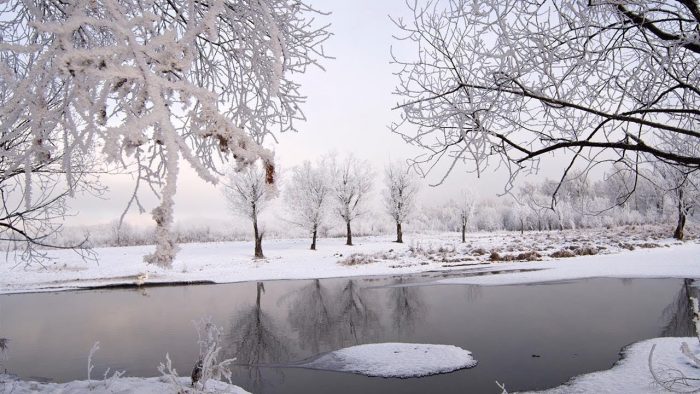
Winter in Genhe is very cold and very dry, but don’t worry there is some minor respite.
The (short) summer can reach incredible highs of 19 to 23 degrees celsius.
#5 Turpan is the hottest city in China
Although there are a number of cities vying for this title our research showed Turpan, in Xinjiang province to be hottest city in China.
Turpan is based in in the north-west of Xinjiang and has some staggering numbers to it’s name:
There were 616 days in Turpan when temperatures hit and exceeded 35C / 95F in a 2,000 day period between 2012 and 2017.
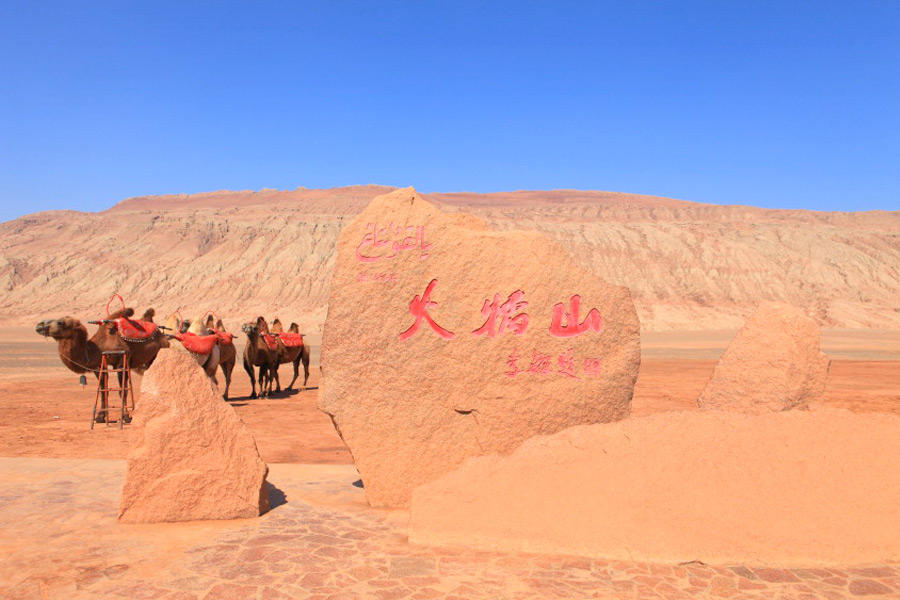
Going a small step further, 513 of those 2,000 days (that’s 25%) exceeded 37C /99F.
Just to put that into perspective, take Changchun (in the north-eastern province of Jilin). In that same time period spanning 2,000 days not ONE day exceeded 35C in Changchun!
Weather in China – Key Vocab
If you’ve got this far, hats off, you’re a trooper!
Now you know all about exactly the type of weather for all times of the year, it’s time to teach you how to use those words when you are in China yourself:
- Hot > 热 rè
- Cold > 冷 lěng
- Warm > 暖 nuǎn
- Cloud > 云 yún
- Rain > 雨 yǔ
- Snow > 雪 xuě
- Wind > 风 fēng

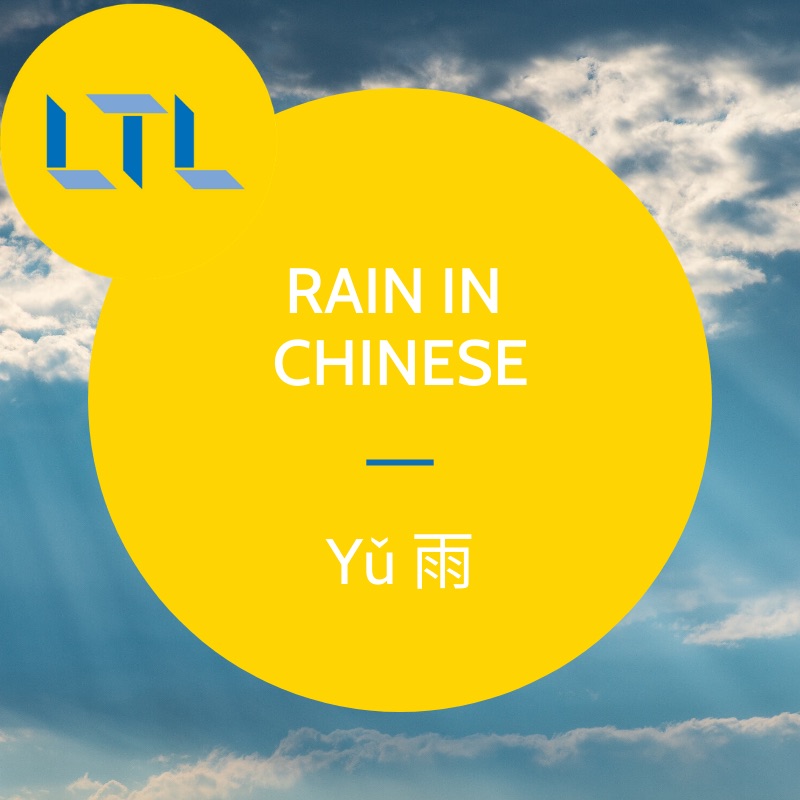
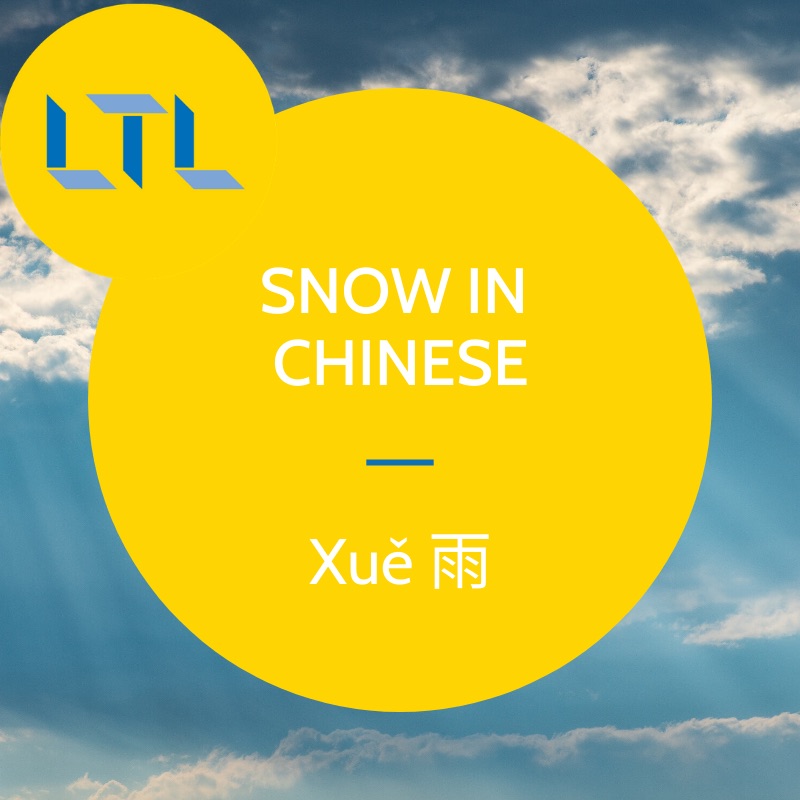
Let’s apply these to some sentences
- It’s rainy today > 今天下雨了 jīntiān xià yǔle
- Yesterday was hot > 昨天很热 zuótiān hěn rè
- Tomorrow will be cold > 明天会很冷 míngtiān huì hěn lěng
- It’s so warm! > 太温暖了!tài wēnnuǎnle!
- What’s the weather like? > 天气怎么样?Tiānqì zěnmeyàng?
- What’s it like outside? > 外边怎么样?Wàibiān zěnmeyàng?
- The weather is terrible > 天气很糟糕 Tiānqì hěn zāogāo
There you have it, a complete guide to the weather in China, all year round.
Have you been to China? What was your experience with the weather?
Why not tell us with a comment below or check out our guide to the weather in Japan and South Korea if you fancy heading even further east!
Thanks for reading 🙂
Weather in China || FAQs
How do you say Weather in Chinese?
Weather in Chinese is 天气 Tiānqì.
Where is the coldest place in China?
The coldest place in China is a city called Genhe in northern, Inner Mongolia.
The average recorded annual temperature in Genhe lies -4.4°C / 24.1 °F.
Even more mind boggling is the coldest recorded temperature in Genhe which stands at -58 celsius!
Where is the hottest place in China?
The hottest city in China is Turpan which is based in North Western Xinjiang.
There were 616 days in Turpan when temperatures hit and exceeded 35C / 95F in a 2,000 day period between 2012 and 2017.
How do you say Rain in Chinese?
Rain in Chinese is 雨 yǔ.
What is the wettest month in China?
July is the wettest month in China. Some parts of the country have around 20 rainy days a month, mainly in the southern regions.
How do you say “What’s the Weather like” in Chinese?
What’s the weather like in Chinese is 天气怎么样?Tiānqì zěnmeyàng?
Want more from LTL?
If you wish to hear more from LTL School why not join our mailing list.
We give plenty of handy information on learning Chinese, useful apps to learn the language and everything going on at our LTL schools.
FANCY SOME FREE ONLINE LESSONS? Grab a free 7 day trial and come and see why our LTL Flexi Classes are taking language learning to a whole new level.
Sign up below and become part of our ever growing community!
![[𝗢𝗟𝗗] LTL Beihai Logo](https://old.ltl-beihai.com/wp-content/sites/17/logo-ltl-header.png)

 Hi, my name is Mojca! I am from Slovenia in Europe and I work as a student advisor at our Shanghai school.
Hi, my name is Mojca! I am from Slovenia in Europe and I work as a student advisor at our Shanghai school.


15 comments
[…] pale, snowy complexion is seen as much more […]
[…] you’ll see the most impact of this coming from the winter months when the central heating is turned […]
[…] (wèiyǔ) means before it rains. 未 (wèi) usually refers to something in the future, i.e. something that hasn’t happened […]
[…] to traditional Chinese medicine, which functions in relations to seasons and hot/cold food, weather, etc, it is best to eat duck meat during spring, autumn and […]
[…] key times to avoid the Great Wall if you can, are the Summer and Chinese […]
Impressive post! Genuine detail about all cities and parts of the year.
Thanks for this
Sally
That’s what we do Sally! Glad you enjoyed it, hope to see you in China soon.
LTL
[…] more snowy matters as we go […]
[…] a long and largely lifeless winter in Beijing, entering springtime brings a new lease of life into the […]
[…] wrote an article about the weather in China which topped 7,000 […]
[…] Oolong Tea or 乌龙茶: wūlóngchá is mostly widely consumed in autumn, because it is said to help to hydrate your body during the dry weather. […]
Wow! What a an impressive post! So detailed! I definitely need to take into consideration the season I come and visit China.
I love the cold, fresh northern winters in China. Predictable so it means you are never surprised
True indeed you know what you get. The cold is certainly an acquired taste!
[…] Here, 未雨 (wèiyǔ) means before it rains. […]